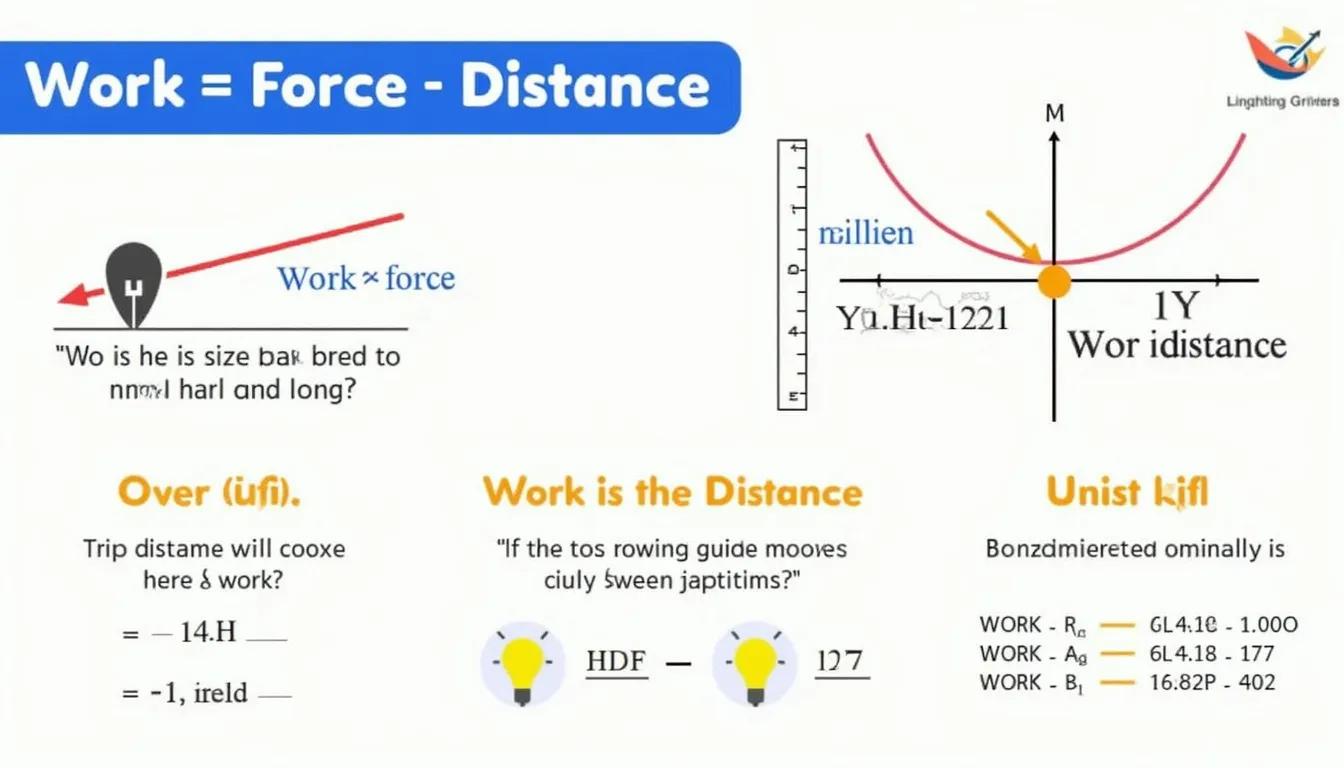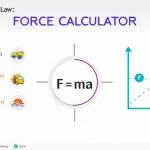Work Calculator
Is this tool helpful?
How to use the tool
- Enter force (N): Type a positive value such as 40 N or 120 N.
- Enter distance (m): Type a positive value such as 3.2 m or 2 m.
- Read the result: The calculator multiplies your inputs and shows work in joules (J).
Formula behind the form
The calculation follows
$$W = F \, rac{}{} d$$
- W – work (J)
- F – force (N)
- d – distance (m)
Example calculations
- Example 1: 40 N × 3.2 m = 128 J.
- Example 2: 120 N × 2 m = 240 J.
Quick-Facts
- The joule is the SI unit of work and energy (ISO 80000-1, 2019).
- 1 kJ equals 1 000 J, roughly the energy to lift a 10 kg mass by 10 m (NIST SP 330, 2020).
- Average human push force peaks near 300 N for short tasks (NIOSH Lifting Equation Guide, 1991).
- Common classroom lab benches limit forces to 500 N for safety (University of Iowa Lab Manual, 2022).
FAQ
What is mechanical work?
Mechanical work is energy transferred when a force moves an object along its line of action; it equals force times displacement (ISO 80000-1, 2019).
How does the calculator compute work?
It multiplies your force input (newtons) by your distance input (metres) and displays the product in joules, rounding to two decimals for clarity (Physics Classroom, 2023).
Why must force and distance share the same direction?
Work depends on the component of distance parallel to the force; perpendicular motion does no work (Serway & Jewett, Principles of Physics 11e).
What ranges are typical for classroom experiments?
Forces between 1 N and 100 N and distances under 5 m keep results below 500 J, safe for basic lab setups (University of Iowa Lab Manual, 2022).
How accurate is the output?
The result is exact to the entered significant figures; rounding only alters the display, not the internal multiplication (ISO 5725-1, 1994).
Can I enter negative numbers?
No. Negative values would represent opposing force or displacement and are outside this tool’s scope, which targets magnitude-based work (MIT OpenCourseWare, Physics 1, 2021).
May I input different units?
Convert other units to newtons and metres first—e.g., 1 lbf = 4.448 N, 1 ft = 0.3048 m (NIST Handbook 44, 2022).
Who uses work calculations professionally?
Engineers size actuators, physiotherapists gauge patient effort, and energy auditors estimate mechanical energy losses (IEEE Spectrum, 2020).
Important Disclaimer
The calculations, results, and content provided by our tools are not guaranteed to be accurate, complete, or reliable. Users are responsible for verifying and interpreting the results. Our content and tools may contain errors, biases, or inconsistencies. Do not enter personal data, sensitive information, or personally identifiable information in our web forms or tools. Such data entry violates our terms of service and may result in unauthorized disclosure to third parties. We reserve the right to save inputs and outputs from our tools for the purposes of error debugging, bias identification, and performance improvement. External companies providing AI models used in our tools may also save and process data in accordance with their own policies. By using our tools, you consent to this data collection and processing. We reserve the right to limit the usage of our tools based on current usability factors.







